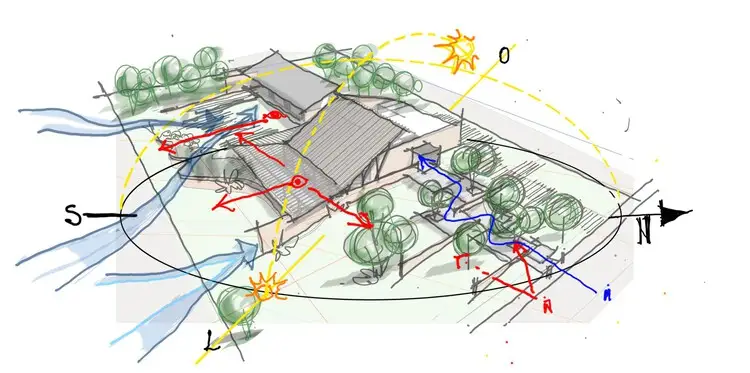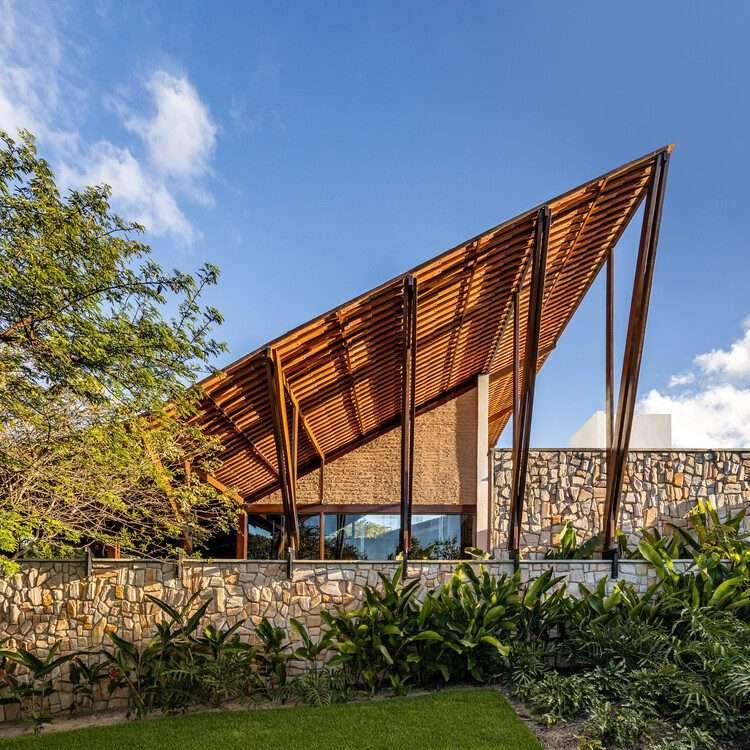Discreet House / Jirau Arquitetura






Architects:
Jirau Arquitetura- Area:
505 m²
Year:
2022
Manufacturers: Antônio Impermeabilizações, Bella Pedra, Carpintaria Caruaru, Casa Pronta, Inova Vidros, Júlio Ar-condicionado, Lama Bioarquitetura, Marcelo Gesso, Patrick Carpintaria, Serralharia Tudo é do Pai , Sierra Ambientes, Tapetah, Zeza Cortinas

Text description provided by the architects. Many of us architects spend a good part of our careers looking for opportunities or chances to do projects that allow our way of thinking about a particular subject to break free and reach the fullness of what a possible “design freedom” might allow us to do.

Here at jirau, we’ve always liked not to wait for this “opportunity” and, instead, we realise that every project, every single one of them, has always been this opportunity. That’s how we’ve built our most successful experiments with social housing, flat blocks and residences.

Following this line of thought, even a small house with a few square metres, for a social programme, always had to have good design placed among the project goals. Along the same lines, we’ve been trying to deconstruct many of the certainties consolidated locally by the property market when we design flat blocks. In the same vein, understanding the unique opportunity that each project offers us, we have rehearsed our ideas, construction techniques, materials, shapes and finishes house after house, which somehow end up creating a trait that identifies us and, in doing so, provides us with encounters with certain clients who give us their complete trust to design their home.


The discreet house was one of those cases in which the terrain was marvellous and the clients came to us because they knew our projects and liked and expected our architecture. Let’s just say that all these situations favoured the emergence of the project in its entirety.

We started with the name: Casa Discreta (Discreet House)!
Yes, that’s what it was. When they came to us, they didn’t want a house to show off or demarcate their social position within a group. It had to be a house for the inside. The clients wanted a house for themselves and not for the condominium. Not from a position of selfishness, but of self-knowledge and simplicity. And that’s what we went after. The project vibrated with soul and energy. It had to be a house for playing, receiving friends, resting, looking after the plants, having a fire, reading a good book, drinking wine or letting time pass.

We started by using the 2,400m² plot of land, accepting everything that was already there. The trees, the shrubs, everything stayed in its place, and the house was built in such a way as not to suppress any of them. We decided to create a front setback of 17 metres, setting the house back from the street. A sequence of septums at the entrance created a path through levels that lead visitors to the front door in a promenade that slows down the pace of those coming from the hectic life of the city and follows this transition from outside to inside.



The rooms are integrated, spacious and bright. The spaces are rich with different ceilings and materials defining the boundaries between the living and dining rooms. An inviting, shaded porch surrounds the living room on three sides, creating the shade and intimacy required of a Northeastern building.



Between the social area and the bedroom area there is a very special corner overlooking a jaboticaba tree, the reading corner.From there, the corridor leads to the bedrooms.It is an open corridor, on the one hand defined by an imposing rammed earth wall, on the other, undefined and without Cartesian limits, which allows the space to flow through the garden to the sinuous line formed by the white brick wall.We wanted this route to be a negation of the enclosed corridor.It is an experience of spatial communication between the resident and the space that blends from the outside in.

For the bedroom module, we revived the figure of the large veranda of the traditional Northeastern house. In front of all the rooms, there is a place for hammocks, swings and from where you can contemplate the garden from a higher elevation. The garden, at the heart of the house, at the centre of everything, has its space shaped on one side by the house, on the other by the natural pool in a sinuous shape, where the trees that were already there when we arrived were the defining features of the designs.

The house is a very simple, single-storey construction, with small gaps between some rooms that give it a soft landing on the slightly sloping level of the plot. The living room and bedrooms are covered in wood and ceramic tiles.


The hand-hewn wooden structure in the living room forms a sculptural solution where each piece has a different angle to accommodate the slope of the roof. It is also worth noting the careful detailing of the metal couplings that articulate the interfaces between the wooden pieces and their encounters with the masonry and floors of the house.


The taipa figure is a curious detail, an experiment with this traditional and little-used construction technique. In the bedrooms we used rammed earth as the wall and the main structural part of this block of the house. In the living room, we used rammed earth, a technique that is much more common and recurrent in the simplest country houses. Clay is a recurring theme, whether in the two taipa techniques used, the ceramic tiles, the industrial bricks used in the fences, the tiles covering some of the floors, the cobogós in the bathrooms or the handmade brick painted white on the winding wall.



In addition, in terms of sustainability, Discreta has an intelligent system of gutters that capture, store and reuse rainwater. The power generation plant is located on the flat slab above the garages.

Lighting is abundant in every room and cross ventilation runs throughout. The house is a fortress against the heat of the tropics and an invitation to the breeze of the agreste. I remember Wandenkolk saying that “architecture needs to be sculpture, inside and out” and this makes me think that Discreta has this quality in itself. Being in the house is like being hugged. The house has colour, its architecture has life. And that’s the kind of project we believe in.




